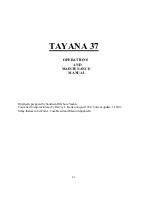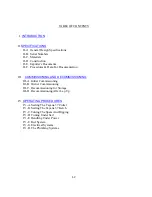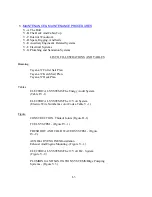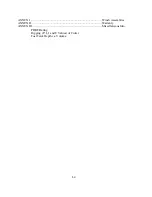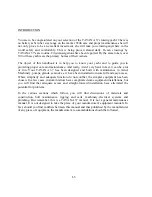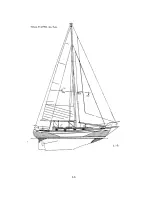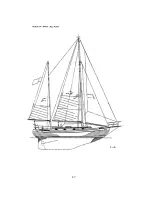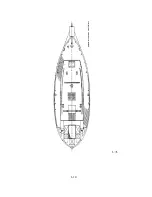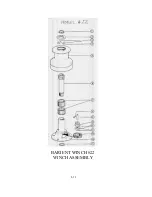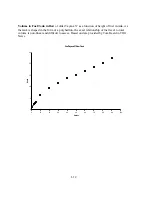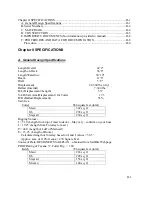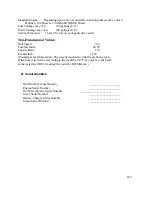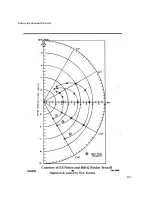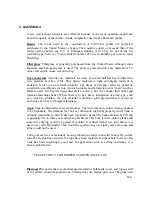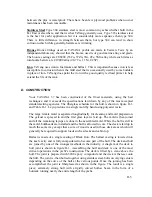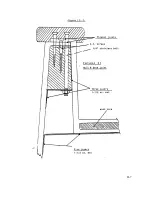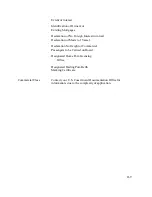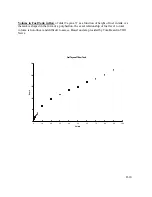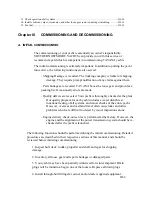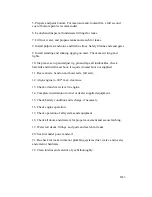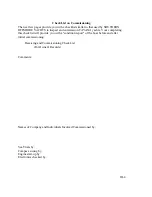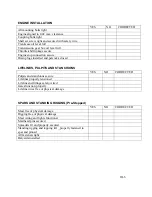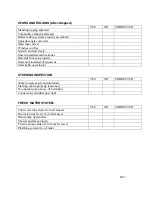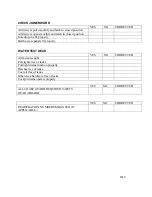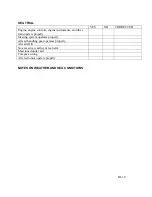
II-5
between the plys is waterproof. There have been few plywood problems when owner
maintenance has been reasonable.
Stainless Steel
Type 304 stainless steel is most common in yachts whether built in the
Far East or elsewhere, and that is what TaYang generally uses. Type 316 stainless steel
is the best for yacht application. but it is considerably more expensive than type 304.
There is little difference in strength between them, but type 304 can tend to show
corrosion which while generally-harmless, is irritating
Bronze
Bronze fittings used on TAYANA yachts are made in Taiwan. Tests by an
independent laboratory showed that the bronze used is of good marine alloy and grade.
The bronze castings are C86800 (55Cu, 37Zn, 3Ni, 2Fe, 3Mn alloy while such items as
turnbuckle barrels are C19000 alloy (98-7Cu, 1.1Ni, 0.25P) .
Iron
TaYang uses iron in fuel tanks and ballast. This is important because iron is less
susceptible to corrosion than is the mild steel that is occasionally used by some builders
in place of iron. TaYang does paint the iron with a good quality red lead primer to help
extend the life of the tank.
D. CONSTRUCTION
Your TAYANA 37 has been constructed of the finest materials, using the best
techniques, and it exceeds the specifications laid down by any of the most accepted
standard-setting agencies. The fiberglass schedule for the hull is shown in figure II-1.
and Table II.-1. Layup is done in a single mold by hand using polyester resin.
The large female mold is separated longitudinally for cleaning and mold preparation.
The gelcoat is sprayed in and the first glass layer is laid up. The mold is then joined
and all the remaining layups are done in the assembled mold. While the hull is still in
the mold, bulkheads are installed and the hull is allowed to cure. The deck is laid up in
much the same way except that a core of wood is used in those deck areas which will
generally be required to support loads such as decks and cabin top.
Ballast is made of a single casting of Black Iron. The ballast casting is lowered into
the keel cavity and is fully encapsulated to become part of the hull. The deck and hull
are joined by one of the strongest methods in the industry. A diagram of the deck to
hull joint is shown in figure II-1. Assembling the hull and deck is one of the most
critical operations in the yacht's construction. The deck is lifted by a crane above the
hull. The joint is prepared with 5200 epoxy compound and the deck is then-set onto
the hull. The joint is -then bolted together using stainless steel-bolts on varying centers
depending on the curve of the hull at the various points. Once the joining has been
accomplished, the joint is fiberglassed as shown in the figure. The result is a single
piece, extremely strong hull with a rigidly curved hollow beam in the form of a
bulwark running nearly the entire length of the yacht.
Содержание 37
Страница 1: ...Chapter I OPERATIONS AND MAINTENANCE MANUAL Chapter 1...
Страница 7: ...I 6...
Страница 8: ...I 7...
Страница 9: ...I 10...
Страница 10: ...I 11 BARIENT WINCH 22 WINCH ASSEMBLY...
Страница 14: ...II 3 Polars for Tayana37 Cutter...
Страница 18: ...II 7...
Страница 45: ...IV 8...
Страница 54: ...IV 17...
Страница 69: ...V 13...
Страница 76: ...V 20...
Страница 80: ...V 24 moisture eliminating product...
Страница 81: ...V 25...

